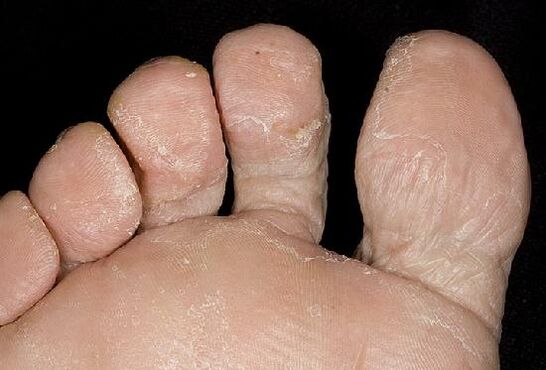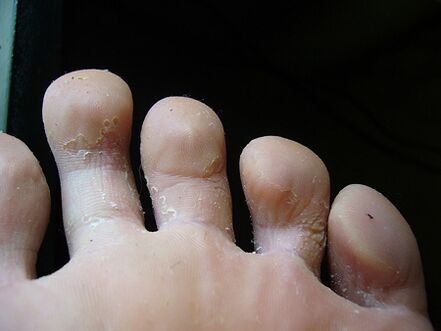
- lover of humanity;
- animal anthropologist;
- Candida.
Causes of fungal pathology

- People with weakened immunity.When the body is weakened by surgery or serious illness, it becomes less resistant to various infections, including fungal infections.
- children and the elderly.Both groups are prone to developing lesions due to age-related characteristics. Young bodies are not yet strong enough, while older people already suffer from a host of chronic diseases that debilitate their bodies.
- people with metabolic diseasesCaused by disorders of the thyroid, pancreas, pituitary gland, circulatory and lymphatic systems.
- Workers in hazardous industries involving high temperatures.In such an environment, conditions are created for the growth and spread of foot fungus.
- Gym, sauna, swimming pool lovers.These activities are very useful in their own right, but if basic hygiene standards for disinfecting these locations are not followed, it can lead to problems such as fungus.
main symptoms of disease

How to identify foot fungus
You can identify the fungus yourself using potassium permanganate. Here's how to do it: Dilute a dilute solution of potassium permanganate. Place the limb in a bowl of solution and observe. Healthy nails will darken, but infected nails remain the same color.
- Oral drugsDestroys fungal spores carried by blood and lymph fluid.
- Topical treatment.Use ointments, creams, special liquids to eliminate the dermatological manifestations of fungi. Do this after a pedicure and clipping of the affected nails.
- Hygiene and hygiene measures.They include disinfecting clothes and shoes. This destroys the infecting spores.
















